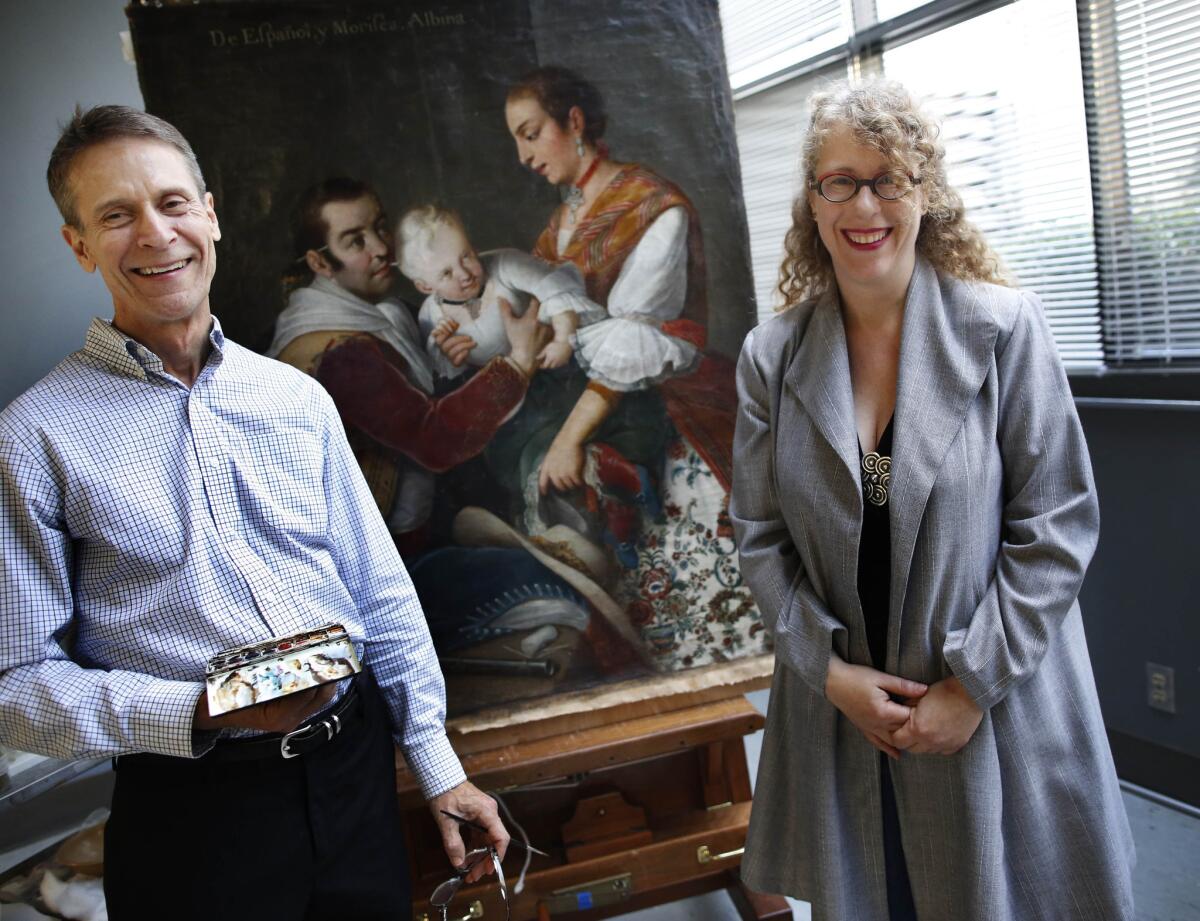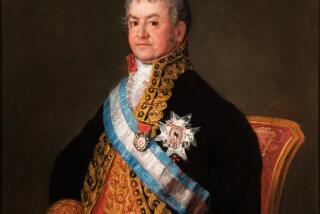Casta paintings were weird racial documents that broke stereotypes

- Share via
As far as discoveries go, it is pretty epic: a rare 18th century masterpiece rolled up under a couch. My colleague Christopher Knight has the story about the rare colonial painting by Mexican artist Miguel Cabrera that was discovered in a home in the Bay Area and is now the latest acquisition by the Los Angeles County Museum of Art.
The 1763 work, titled “From Spaniard and Morisca, Albino,” is a casta painting — a type of artwork that was unique to the Americas (particularly Mexico) during the colonial era, in which painters assiduously chronicled different racial, ethnic and class groups. The Cabrera piece, the sixth in a series of 16 paintings on the subject, shows a Spanish father and a Moorish mother holding an albino baby.
The acquisition of the Cabrera painting is the third such painting to land at LACMA in recent months. In February, I wrote about how Latin American art curator Ilona Katzew had spearheaded the acquisition of two exceedingly rare Ecuadorean casta paintings by Vicente Albán.
Casta paintings are a decidedly weird territory, displaying an obsession with the races and the ways in which they mix — Spanish with Indian, Indian with Moorish, black with Indian and so on. (In that regard, this 18th century genre is very contemporary.)
I’ve also found casta works interesting because in many ways they strike me as a curious precursor to the ways in which races are described in the Spanish language today, which is far more nuanced than English. (In English, for example, a black man is black regardless of skin tone, whereas in Spanish he can be mulato, negro or prieto, depending on the shade of his skin — mulato being lightest and prieto darkest.)
Another thing that always catches my attention in these works is the sumptuous outfits and settings in which the people are often depicted. Casta paintings aren’t some simple eugenics chart. They often show full-blown environments: sumptuous clothing, piles of fertile fruits and some of the most attractive humans depicted in art.
When I spoke with Katzew about this in February, she told me that these depictions were, in their own way, fighting preconceptions about the New World in Spain.
“There was a saying, ‘buenos potros y malos caballos,’” she explains — from good foals come bad horses. It was a way of implying that what emerged from the steaming, tropical Americas was something that failed to mature into something worthwhile.
“It was a way of diminishing the natural capabilities and intelligence of the people,” says Katzew. “These paintings counter that.”
Moreover, many works depict symbols of Catholicism, such as rosaries and crucifixes.
Adds Katzew: “It was a way of saying, ‘Just because we live in the Americas doesn’t mean we aren’t sophisticated and we don’t have religion.’”
Therefore, in Cabrera’s tender depiction of a father, mother and child is another story — one about a continent struggling to establish an identity for itself.
Vicente Albán’s “Indian Woman in Special Attire” and “Noble Woman with Her Black Slave” are on view indefinitely on the fourth floor of the Art of the Americas building. Miguel Cabrera’s “From Spaniard and Morisca, Albino” will go on view as part of the exhibition “50 for 50: Gifts on the Occasion of LACMA’s Anniversary,” which opens to the public on Sunday, April 26. Los Angeles County Museum of Art, 5905 Wilshire Blvd., Los Angeles, lacma.org.
Find me on Twitter @cmonstah.
More to Read
The biggest entertainment stories
Get our big stories about Hollywood, film, television, music, arts, culture and more right in your inbox as soon as they publish.
You may occasionally receive promotional content from the Los Angeles Times.











